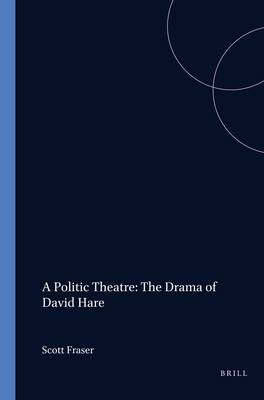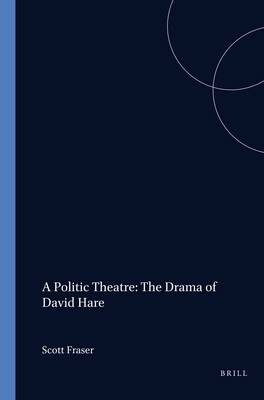
- Afhalen na 1 uur in een winkel met voorraad
- Gratis thuislevering in België vanaf € 30
- Ruim aanbod met 7 miljoen producten
- Afhalen na 1 uur in een winkel met voorraad
- Gratis thuislevering in België vanaf € 30
- Ruim aanbod met 7 miljoen producten
Zoeken
€ 102,45
+ 204 punten
Omschrijving
This analysis of twenty published texts by David Hare employs definitions from contemporary semiotic literary theory as a means of describing typologies of political drama. By tracing the incorporation of stylistic devices from agitational propaganda (caricature, self-referentiality, the frisson between oral and visual signification) throughout the typologies, the study illustrates how each text subverts audience expectation based on established dramatic genres. The collection of texts is seen as inherently self-referential and politically subversive.
At the centre of each typology is a protagonist who functions as a martyr to or parodic emblem of contemporary society. Consistently, the hermeticism of public institutions which represent the political status quo makes them immune from any form of individual protest from the Left or Right. In the satirical anatomy, the emblem of political dissent is coopted by involvement within the institution, or the stage is dominated by a conservative who controls the action. In the demythology, private individuals are seen as incapable of altering the public frame of history; but here private suffering subverts the collective mythology of the historical construct. In the martyrology, the emblem of dissent is associated with a moral virtue which is inimical to contemporary society, the audience's expectation of the triumph of the individual being subverted when he/she is expelled from the onstage world on the grounds of political ideology. It is only in the final typology, the conversion, that a conservative emblem is seen as directly influenced by such martyrdom, and the audience is provided with an actual example of political change. Thus, the study describes how each typology builds on the construction of the previous, and all generate from agitational propaganda.
At the centre of each typology is a protagonist who functions as a martyr to or parodic emblem of contemporary society. Consistently, the hermeticism of public institutions which represent the political status quo makes them immune from any form of individual protest from the Left or Right. In the satirical anatomy, the emblem of political dissent is coopted by involvement within the institution, or the stage is dominated by a conservative who controls the action. In the demythology, private individuals are seen as incapable of altering the public frame of history; but here private suffering subverts the collective mythology of the historical construct. In the martyrology, the emblem of dissent is associated with a moral virtue which is inimical to contemporary society, the audience's expectation of the triumph of the individual being subverted when he/she is expelled from the onstage world on the grounds of political ideology. It is only in the final typology, the conversion, that a conservative emblem is seen as directly influenced by such martyrdom, and the audience is provided with an actual example of political change. Thus, the study describes how each typology builds on the construction of the previous, and all generate from agitational propaganda.
Specificaties
Betrokkenen
- Auteur(s):
- Uitgeverij:
Inhoud
- Aantal bladzijden:
- 208
- Taal:
- Engels
- Reeks:
- Reeksnummer:
- nr. 105
Eigenschappen
- Productcode (EAN):
- 9789051835694
- Verschijningsdatum:
- 1/01/1996
- Uitvoering:
- Paperback
- Formaat:
- Trade paperback (VS)
- Afmetingen:
- 150 mm x 220 mm
- Gewicht:
- 303 g

Alleen bij Standaard Boekhandel
+ 204 punten op je klantenkaart van Standaard Boekhandel
Beoordelingen
We publiceren alleen reviews die voldoen aan de voorwaarden voor reviews. Bekijk onze voorwaarden voor reviews.











